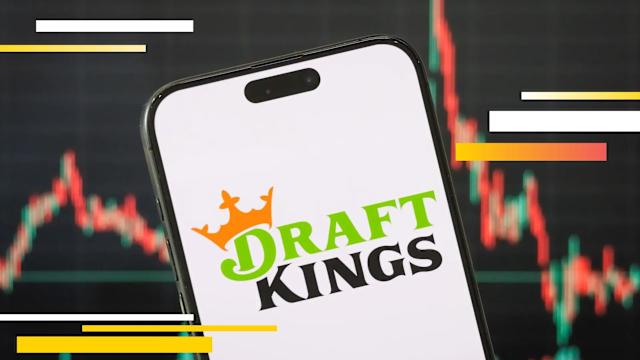The Premier League offers a wide range of betting markets, match result, correct score, both teams to score, handicaps, props and outright winners, and each market needs a different approach. Win more than favourites by shopping for odds, studying team form, and managing your bankroll; favour value over emotion and avoid chasing losses. This guide explains the key markets UK punters should know and gives practical strategy you can use before kick-off and in-play.
The Premier League draws heavy volume, which means bookmakers shift lines quickly. Small edges, better odds, sharper analysis of injuries or rotation, and consistent staking, compound into steady returns. This article breaks markets into clear categories and offers step-by-step strategies so you can bet more intelligently and responsibly.
Also Read: How to calculate your returns from a treble bet? Here is a simple guide
Understand the main Premier League betting markets
Match result (1X2)
The simplest market: Home win (1), Draw (X), Away win (2). Use decimal odds and compare across bookmakers to find value. For tight fixtures, consider alternatives like draw no bet or double chance.
Draw no bet & double chance
Draw no bet removes the draw, you get your stake back if the match draws. Double chance covers two of the three outcomes (e.g. home win or draw). Both reduce risk but offer smaller returns.
Asian handicap & European handicap
Handicap markets balance mismatches. An Asian handicap can split the stake across two lines (e.g. -0.25) and often removes the draw. Use them when you expect one side to dominate but odds on the straight match bet don’t offer value.
Also Read: How do decimal odds work in the UK? Here is a simple guide for you
Over/under (total goals) & team totals
Bet on total goals in the match or for individual teams. Look at recent averages and expected goals (xG) metrics to judge whether a game will be high or low scoring.
Both teams to score (BTTS)
BTTS is popular: you win if both sides score. Use form, defensive records, and attendance of key attackers to decide.
Correct score
High payout but low probability. Best used sparingly or as part of a small, strategic stake in an accumulator.
Anytime/first goalscorer & player props
Player props reward specialist knowledge — rotation, minutes, and set-piece duties matter. Check starting line-ups before betting.
Accumulators & bet builders
Accumulators combine multiple selections into one bet. They offer big returns but require all legs to win. Bet builders (on-site combiners) let you mix markets from a single game. Manage stake sizes tightly for these.
Outrights (season winners, top-four, relegation)
Outrights pay long-term. They require patience and a plan; market moves after transfer windows, injuries and managerial changes can create value opportunities.
Practical strategy: how to find value
1. Do your homework, use data, not hunches
Look at recent form (last 5–10 matches), home/away records, injuries and rotations, and advanced metrics like xG, xGA and shots in the box. Trusted data sources and club team sheets matter. Avoid betting without checking the confirmed starting line-ups.
2. Shop for odds, use more than one bookmaker
Different firms price markets differently. Open accounts with several regulated UK bookmakers and use odds comparison tools. Small differences in decimal odds compound over time.
3. Back value, not favourites
Value is when your estimated probability of an outcome exceeds the implied probability from the odds. If you believe a result has a 40% chance, back it only if the odds imply less than 40%.
4. Use appropriate staking
Adopt a staking plan (flat stakes, percentage of bankroll or Kelly for advanced users). Most recreational punters do well with a fixed percentage (1–3% of bankroll) to survive variance in the Premier League.
5. Manage risk in accumulators
Limit the number and size of accumulators. Consider partial cash-outs or insurance features if available, but weigh fees and reduced returns first.
6. In-play strategy: React, don’t overreact
Wait for confirmed trends: early red cards, injuries, or tactical changes. Use live stats (possession, shots on target, expected goals in-play) before placing in-play bets. Avoid chasing losses after conceding a goal.
7. Watch market movement
If lines move consistently toward one outcome, large-money bettors or insiders may be influencing them. Movement can indicate value or sharp money; investigate before following blindly.
8. Specialise and build an edge
Focus on one area (e.g. underdogs, first half markets, or a particular club). Depth beats breadth — specialist knowledge lets you spot soft lines other punters miss.
Pre-match checklist for smart Premier League bets
- Confirm starting line-ups and injuries
- Check referee appointments and disciplinary records
- Compare odds across bookmakers
- Review recent form and key advanced metrics (xG, shots on target)
- Decide stake size based on bankroll plan
Responsible betting
Set deposit and loss limits, take breaks and never bet money you cannot afford to lose. Use UK tools such as GamStop and the voluntary limits provided by licensed operators. Betting should be entertainment, not a way to chase income.
FAQs
What is the best market for Premier League beginners?
Match result or BTTS are easiest to understand. Start with small stakes and avoid complex accumulators until you have a record of consistent wins.
How do decimal odds work?
Decimal odds show the total return including stake. For example, odds of 2.50 mean a £10 stake returns £25 (£10 × 2.50), a profit of £15.
Are accumulators worth it?
They offer big payouts but low probability. Use small stakes and seek value legs rather than combining many favourites.
How important is team news?
Crucial. Rotation, injuries and suspension affect outcomes and player props. Always check the confirmed teams before placing bigger bets.
Where can I find reliable Premier League stats?
Use reputable sources for xG and match stats. Many betting sites and specialised analytics platforms publish detailed metrics for free or via subscription.








